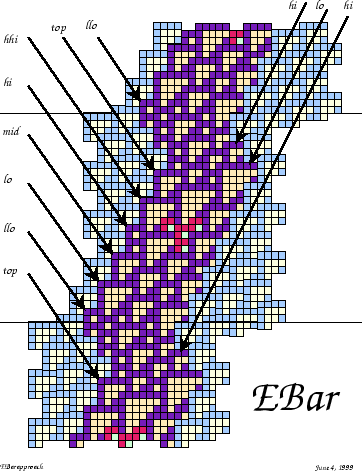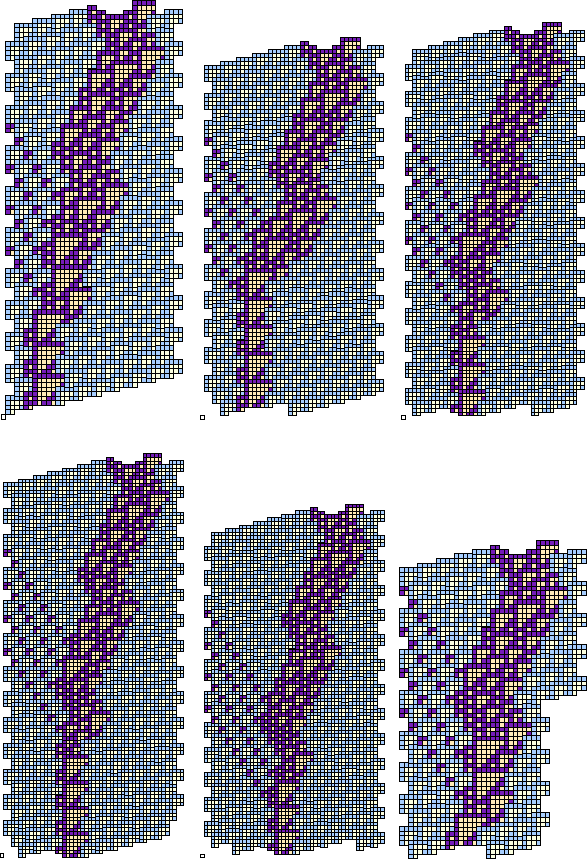| align |
monomer |
dimer |
trimer |
tetramer |
tetrad |
pentad |
| top |
E2 |
E1 |
D1 |
C2 |
C2 |
C1 |
| hhi |
E2 |
EBar,2 B, Atet |
D1 |
EBar, Atet |
C2 |
C1 |
| hi |
EBar, A |
EBar,2 A |
C3 |
C2 |
C2 |
C1 |
| mid |
EBar, A |
D2 |
D1 |
C2 |
C2 |
C1 |
| lo |
EBar, A |
E1 |
F, BBar, 2 B |
F, BBar, B |
C2 |
C1 |
| llo |
EBar, A |
E1 |
D1 |
EBar,Atet |
C2 |
C1 . |
|


